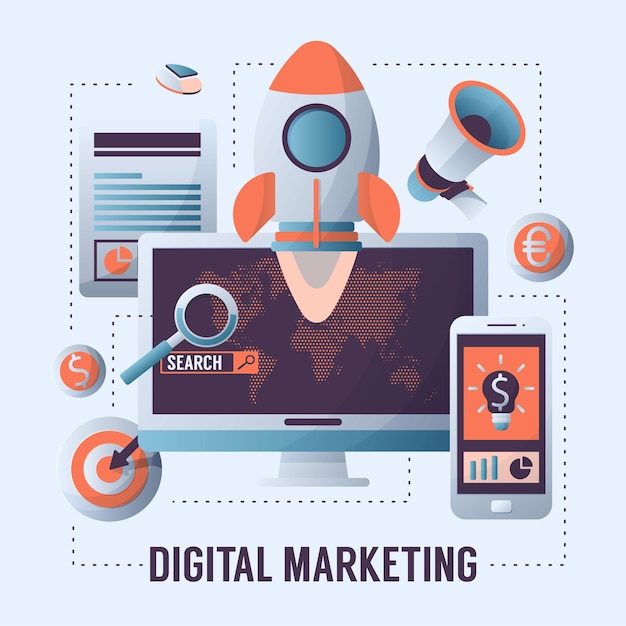Personalization in Email Marketing: How to Increase Open Rates and Conversions

If you're hoping to master email marketing along with other digital strategies, a digital marketing course with placements in Bengaluru will help you get the hands-on experience and the know-how from the real world. So let's take a very deep dive into how email personalizing works and how you can use it for maximum success in your campaign.
The Importance of Email Marketing Personalization Generic, one-size-fits-all emails just do not cut it anymore. Nowadays, customers expect bespoke content that resonates with their needs and interests. Here is why personalization is essential:
More Opens: Emails with personalized subject lines are opened 26% more than those without. Much Higher Click-Through Rates: Personalized emails generate six times greater transaction rates compared to generic ones. Build Trust: Customers trust a brand more and engage with it when given emails pertinent to their interests. With that in mind, let's delve into techniques for implementing personalization.
- First Impressions Matter — Use Recipient's Name The simplest yet most powerful way to personalize emails is using a subscriber's first name in subject lines and email bodies. According to research, the chances of making an opened email increase when a subscriber receives an email that holds their name.
Example ❌"Check Out Our New Offers!" ✅"John, Just For You — Exclusive Deals!"
💡Pro Tip: Don't overdo it, though-the recipient's name anywhere in the body of the email will sound forced. Instead, simply let it be located somewhere random for effect.
- Segment Your Mailing List for Relevant Content Segmentation is the backbone of personalized emails. It allows the sending of one email to several categories of audiences. Segment your audience according to criteria such as:
Demographics (age, gender, or location) Purchase History (first-time buyer, repeat customer, or abandoned cart customer) Behavioral Data (engagement by email, visits to the site, interest in products) Example A fashion house can send seasonal outfit recommendations catered to customers based on the varied geography. Users in Bengaluru might get “Monsoon Must-Haves,” whereas customers in Delhi might get “Winter Wardrobe Essentials.”
💡Pro Tip: Advanced tools such as Mailchimp, HubSpot, and Klaviyo allow you to segment your audience with multiple parameters to accurately target the audience.
- Personalize the Subject Line Your subject line is the first impression, so making it personalized would drastically increase open rates. Apart from inserting the recipient's first name, you can:
✅Refer to the recipient's last purchase: "Loved your last purchase? Here's something you might like!" ✅Highlight location: "Bengaluru Shoppers: Exclusive Deals Just for You!" ✅Create FOMO: "Johnn, Your VIP Discount Expires Tonight!"
💡Pro Tip: A/B test different subject lines to see which ones get better open rates.
- Post-Transaction Emails Are Behaviorally Triggered Behavior-triggered emails are potent little nuggets of messages designed to keep subscribers engaged. A few very common types of behavior-triggered emails include:
Welcome Emails — sent when a user subscribes. Abandoned Cart Reminders — to send encouraging nudges to a customer to complete their purchase. Birthday/Anniversary Emails — offering special deals for special days. Re-engagement Emails — looks to reactivate an inactive subscriber. Example: For instance, after the customer added products to the cart without completing the purchase, sending the customer,
"Hey John, your favorite sneakers are still in your cart! Complete your order before they sell out!"
💡Pro Tip: Making the emails relevant with the help of action personalization increases conversion rates.
- Dynamic Content for Personalization Dynamic content allows different content to be displayed to different users within a single email. Depending on user data, images, text, and CTA (Call-to-Actions) are able to be changed.
Example: A travel agency might send one email but show different destinations:
For the Frequent flyer, "Plan Your Next International Trip!" For the Local Explorer, "Weekend Getaways Near Bengaluru!" 💡Pro Tip: Most email marketing software allows the use of dynamic content blocks that can create tailored user experiences.
- Send Emails Based on the Time Relevant to Users Strategy! Time, if your subscribers are in different time zones or possess different habits for checking emails, will improve engagement.
How to know which times work best? 📊Past open rates & times of engagement. 🌎Time zone considerations for international subscribers. 📅A test of different send times to know what clicks.
💡Pro Tip: Most email platforms utilize an AI-driven send time optimization setup to choose the best time to email any given recipient.
- Stimulate Two-Way Interaction from Emails Instead of one-sided marketing emails, incite users to reply, provide feedback, or respond in some way. This indirectly turns these emails into conversations.
Examples: Product reviews: "John, how did you like your recent purchase?" Responses: "Hit reply and tell us what you’d love to see next!" Polls and surveys: "Help Us Improve! Take this quick 2-minute survey." 💡Pro Tip: Engagement-centered emails create stronger relationships that instill greater trust in the customer.
Conclusion
Personalization is a must-have, not an option in email marketing. From custom subject lines and segmentation to finding the best time to send with AI, personalized emails have a huge increase in open rate, strong engagement, and improved conversion.
If you aspire to delve into advanced email marketing approaches, appreciate audience segmentation, and learn automation techniques, then enroll in a digital marketing course with placement in Bengaluru.